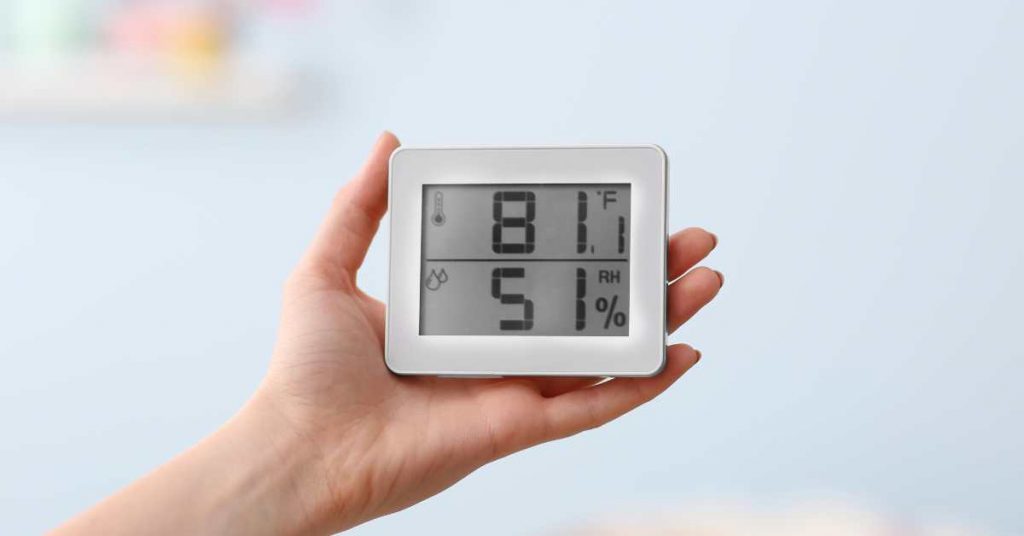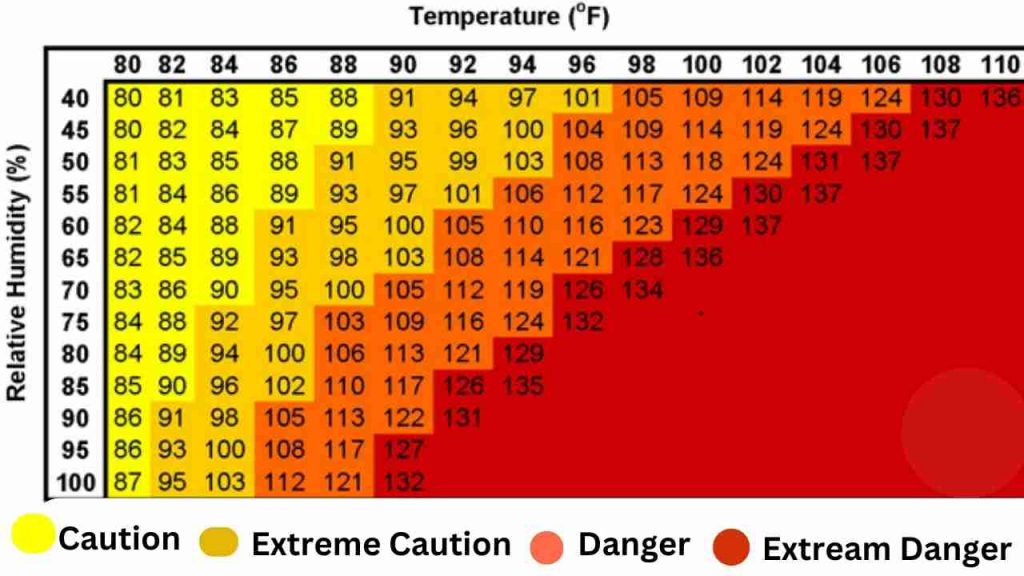
Humidity refers to the amount of moisture or water vapor present in the air. High humidity can be defined both in an outdoor and indoor context:
High Outdoor Humidity:
- High outdoor humidity occurs when there is a significant amount of moisture in the air relative to its maximum capacity to hold water vapor at a given temperature.
- It is often associated with warm and tropical climates, coastal regions, or rainy weather.
- High outdoor humidity can make the air feel heavy, muggy, and uncomfortable. It can also contribute to the perception of higher temperatures, making hot days feel even more oppressive.
High Indoor Humidity:
- High indoor humidity occurs when the moisture level inside a building is above the recommended comfort range, typically between 30% and 60% relative humidity (RH).
- It can result from various factors, including poor ventilation, insufficient air conditioning or dehumidification, and water leaks.
- High indoor humidity can lead to a range of issues, such as discomfort, mold and mildew growth, condensation on windows and walls, and potential health problems. It can also affect indoor air quality.
The ideal indoor relative humidity is between 30% and 50%. Between 50% and 65% your body feels sticky and uncomfortable. Relative humidity of more than 65% apart from making you feel sickly promotes the growth of mold, windows become foggy, there are musty smells in the house and allergies and asthma worsen.
In summer, humidity of 65% or more is considered high. On the other hand, humidity of 55% or more is considered high in winter. The ideal relative humidity in summer is 40-50% while the ideal relative humidity in winter is 30-40%.
The ideal indoor humidity also depends on the outside temperature. If the outside temperature is high, the indoor relative humidity should be slightly higher than when the outside temperature is low.
For that reason, ideal relative humidity levels in summer and winter are not the same even for the same area. That is something most folks don’t understand.
The chart below shows how ideal relative humidity changes with changes in outside temperature.

What is Considered High Outside Humidity in Summer?
Have you ever heard of the phrase “It is not the heat, it is the humidity” especially during the summer? That is usually true because high humidity makes it feel hotter than it actually is.
For instance, when the outside temperature is 85 degrees but the humidity is 75%, the temperature feels like it is 95 degrees. That is known as the heat index, the apparent temperature or “feels like temperature”.
If the relative humidity increase to 85% but at the same outside temperature, the apparent temperature becomes 99 degrees. As you can see, the higher relative humidity the higher the heat index.
However, if the outside temperature remains 85 degrees but the relative humidity drops to 30%, the apparent temperature will be 84 degrees. At 50% relative humidity the apparent temperature will be 88 degrees.
When the relative humidity is low, the heat index/apparent temperature can be lower than the actual temperature. For example, when relative humidity drops to 15%, 85 degrees feels like 81 degrees.
This tells us that high humidity makes it feel hotter than it actually is while low humidity makes it feel colder that it is.
It is easy to control the relative humidity inside the house but outside there is nothing we can do. So, what would be considered high humidity outdoors during the summer?
Apart from just checking the outside humidity, I would recommend trying to figure out what the heat index is. The heat index will tell you whether it is safe to stay outside since as we have seen it is a function of both relative humidity and outside temperature.
Outside relative humidity in summer would be considered high if the corresponding heat index is 103 degrees Fahrenheit or higher. It is safer to use the heat index than relative humidity since heat index factors in both the actual temperature and the relative humidity.
Arid states like Arizona have low relative humidity levels but high temperatures. The relative humidity outside could be an ideal 45% but if the actual temperature is 100 degrees, expect the heat index to be 115 degrees, which is considered dangerous.
Now compare that with another location with a relative humidity of 75% and outside temperature of 80 degrees. The heat index in that location will be a safe 86 degrees.
As you can see, using a relative humidity chart or calculator to figure out the heat index is a better way to gauge the how safe the outdoors are during the summer instead of just concentrating on the relative humidity.
How High Humidity Affects Our Bodies
Our bodies have a natural mechanism of dealing with excessive heat called perspiration or simply sweating. The skin has tiny pores through which sweat is released from the body.
For cooling to happen however, the sweat has to evaporate from the surface of the skin. Evaporation creates a cooling sensation because it takes heat from the surrounding.
It is just like how ACs work. When the Freon/refrigerant evaporates, it takes heat away from your indoor air and that is how cooling takes place.
For evaporation of sweat to happen, the surrounding air has to be in need of moisture. If it is concentrated with moisture, it will not take up any more moisture, unless the temperature increases.
And that is exactly why high humidity makes us feel hotter than it actually should be. Since the air contains a high concentration of water vapor, it does not readily accept the sweat on our bodies.
As a result, the body does not cool off and because the sweat is still with us our bodies feel sticky and just uncomfortable.
The opposite of that is what happens during winter when the relative humidity is low. Low relative humidity means that the temperature is low as well but importantly the air is dry (has a high affinity for moisture).
The dry air therefore pulls moisture from our skin, leaving our bodies exposed to the elements. That is exactly why low relative humidity makes you feel colder than it actually is.
High Humidity in Summer: Signs and How to Deal with It

While there is nothing we can do about high humidity outside, it is possible to control the humidity inside the house to comfortable levels.
By the way, ideal humidity is expressed as a range for the reasons below:
- People find comfort at different RHs just like temperature.
- Ideal indoor RH is a function of the outside temperature hence summer and winter ideal RHs are not the same.
The following are the signs that your indoor humidity is too high:
- Stuffy/clammy air
- General discomfort
- Musty smells in the house
- Mold growth
- Water stains in walls and ceilings
- Condensation on windows
- Worsening asthma and allergies
- Swollen wood/furniture
- Pipes dripping water
There are many ways to reduce the relative humidity in a house/room some of which are natural but the 2 best ways are through an air conditioner and a dehumidifier.
Let us look at the several ways to reduce the humidity indoors:
- Air conditioner – as the AC evaporator coil is cooling the air, water vapor in the air condenses and is drained out through the AC drain line.
- Dehumidifier – It can be a whole-house or portable dehumidifier. Dehumidifiers work like ACs but do not cool the air. They only strip off moisture to the required levels.
- Size Your AC properly – Oversized AC units will cool the indoor air fast but are not effective in humidity reduction. You need a properly sized AC which will run for a longer time and with every cycle remove substantial moisture from the air.
- Set the HVAC fan to Auto instead of ON. That allows the moisture to drip off the coil instead of being evaporated and circulated back in the house.
- Make sure the condensate drain pan is level. If it is tilting to one side, water will always pool inside, increasing the humidity in the house.
- If you have a crawlspace make sure that you have a vapor barrier to prevent rising damp from entering the house.
- Close/seal off crawlspace vents to prevent outside humid air from entering the house.
- Always use exhaust fans when cooking or showering.
- Take quick cooler showers.
- Always check, clean and dry carpets and rags as they can trap moisture resulting in mold growth.
- Fix water leaks in the house.
- Insulate water pipes.
- Use a basket of charcoal briquettes to reduce moisture in a room.
- DIY a rock salt dehumidifier which will absorb moisture from the indoor air.
- Consider drying your laundry outside.
And basically that is everything about high humidity outside and inside. I hope that this post was helpful.





